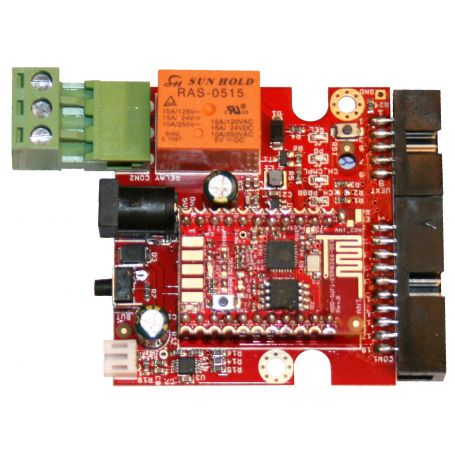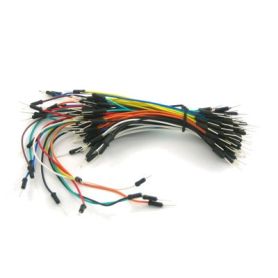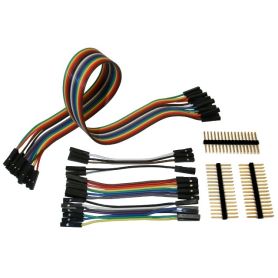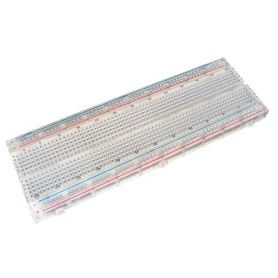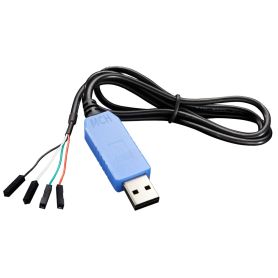ESP8266 Wifi Module - Evaluation board + Lipo battery
Carte d'évaluation ESP8266
- Relay,
- Buton,
- UEXT,
- 2 Mo de Flash,
- Lipo charger
- GPIO connector
- OLI-ESP8266-EVB-BAT
Payments are secured by LyraCollect, a French payment collection company.
It is possible to delivered to your home, to a pick-up point or picked up by appointment at MCHobby
We prepare, pack and ship your orders with great respect and care.
ESP8266 evaluation board from Olimex for autonomous projects
Implementation of the ESP8266 by Olimex Ltd + an evaluation board + Lipo charger, this variation of the ESP is significantly improved with a large amount of input/output, access to the Analog->digital converter, 2 MB of flash memory (unlike other modules only offering 512Ko) and an SDIO connector. Olimex is also a guarantee of quality and durability of the range.
The Olimex version of the ESP8266 is directly referenced in the list of boards when you install the ESP8266 support on Arduino IDE (see the detail of this product for more information on the Arduino IDE support) but nothing prevents you from using MicroPython with this evaluation board.
This booard is fitted with an UEXT connector allowing to connect UEXT sensors and UEXT expansion board available on our shop (or directly from Olimex).
About this ESP8266 evaluation board ?
This OLI-ESP8266-EVB-BAT evaluation kit is made of:
- An ESP8266 development module
- An evaluation board fitted with relay allowing to quickly evaluate the possibilities of the Olimex's ESP8266.
- This BAT version of the evaluation board also brings a charge/discharge circuitery for the LiPo battery. This allows the creation of autonomous projects.
- The extension connector (IDC 20 pins) used to connect extension boards.
- And an UEXT connector (IDC 10 pins) to quickly connect UEXT sensors and expansion boards.
The ESP8266 development board
The Olimex MOD-WIFI-ESP8266-DEV module (this product) is the ultimate module for your ESP8266 developments. This version of the ESP8266 exposes all its GPIOs and ressources, it can be soldered directly onto a board or used with a breadboard (thanks to some PinHeader). It is even possible to solder a µFL connector to allow the connection of an external antenna.
The ESP8266 is a SoC (System On Chip) which integrates an Xtensa LX106 processor, RAM memory, an RF (Radio Frequency) interface and a TCP/IP stack. The ESP8266 is capable of WiFi support on a board with few additional components. This development board implements the ESP8266 in UART mode (currently the most popular mode) and is accompanied by 2Mb of SPI FLASH memory (while competitors often opt for 512Kb). All GPIOs are available on this model (and usable on a Breadboard).
Evaluation board
The board do include:
- 220V AC relay wired on the GPIO 5,
- Jack connector to plug a 5V PSU,
- An UEXT connector to plug in an UEXT capable sensor or module,
- A button wired on the GPIO 0 to activate the Bootloader,
- An IDC 2x10 expansion connector (IDC standard, 2.54mm spacing - great to connect expansion board).
The board also fits an UEXT connector used to plug UEXT sensor and expansion boards (available on our shop or via Olimex).
Features
- Includes the ESP8266 EVB module
- 220VAC/10A Relay with status LED.
- Button to activate the bootloader.
Press the button THEN power it up NEXT release the button. This will activate the bootloader. - 5V jack (5V max!!!)
- UEXT connector
- GPIO connector (2x10pins)
- Lipo connector with status LED + cherging circuit
- µFl connector for external antenna
- Size: 57x50mm
Documentation
- ESP8266 datasheet (english)
- How to activate the bootloader (FLASH, UART, SDIO)
- ESP8266 community wiki
- ESP8266 Wiki
- UEXT connector
- Do Button for IFTTT with ESP8266-EVB (Olimex blog, english)
- Debug your software with ESP8266-EVB with JTag and Visual Studio (Olimex blog, english)
Matériel
- board schematic (PDF)
- Olimex's ESP8266 module schematic (PDF)
- Hardware specification (Cadsoft Eagle)
- Ressources
ESP8266 And Arduino IDE
The ESP8266 is supported by Arduino IDE. Use the Board Manager to add ESP8266 support and program easily from Arduino.
To add the ESP8266 support, go in Arduino IDE preference, tab "Additional Board Manager URLs" and add the URL http://arduino.esp8266.com/package_esp8266com_index.json .
Next, in the "Tools > Type of board > Board Manager" you can install from the "esp8266 by ESP8266 Community" support. You will find a "Generic ESP8266 Module" in the list.
You can also refet to the "Adding Custom Boards to the Arduino v1.6.3 Board Manager" tutorial (Adafruit, english)
ESP8266 under MicroPython
We do gave MicroPython tutorial around the ESP8266 from Olimex (in french).
- Flash MicroPython onto an l'ESP8266-EVB (French, MC Hobby Wiki).
- Using the ESP8266-EVB (evaluation board) sous MicroPython (French, MC Hobby Wiki)
More information
See the following product sheet for additional info ESP8266-UEXT, ESP8266-DEV, ESP8266 breakout
C'est quoi ce connecteur UEXT?
Nothing magic about the UEXT connector. This connector support 3 kinds of serial interface: I2C, SPI et RS232. This connector is a great approach to creates expansion boards/sensors with this development board.
Evaluation Board/Kit Important Notice
The original text evaluation-board-notice is available at Olimex.
OLIMEX Ltd provides the enclosed product(s) under the following conditions:
This evaluation board/kit/module is intended for use for ENGINEERING DEVELOPMENT, DEMONSTRATION OR EVALUATION PURPOSES ONLY and is not considered by OLIMEX Ltd to be finished end-product fit for general consumer use. Persons handling the product must have electronics training and observe good engineering practice standards. As such the goods being provided are not intended to be complete in terms of required design-, marketing-, and/or manufacturing related protective considerations, including product safety and environmental measures typically found in the products that incorporate such semiconductor components or circuit boards. This evaluation board/kit/module does not fall within the scope of the European Union directives regarding electromagnetic compatibility, FCC, CE or UL and therefore may not meet the technical requirements of these directives or other related documents.
The user assumes all responsibility and liability for proper and safe handling of the goods. Further the user indemnifies OLIMEX from all claims arising from the handling or use of the goods. Due to the open construction of the product, it's the user responsibility to take any and all appropriate precautions with regard to electrostatic discharge, conducted and radiated emissions.
EXCEPT TO THE EXTENT OF THE INDEMNITY SET FORTH ABOVE NEITHER PARTY SHALL BE LIABLE TO THE OTHER FOR ANY INDIRECT SPECIAL INCIDENTAL OR CONSEQUENTIAL DAMAGES.

